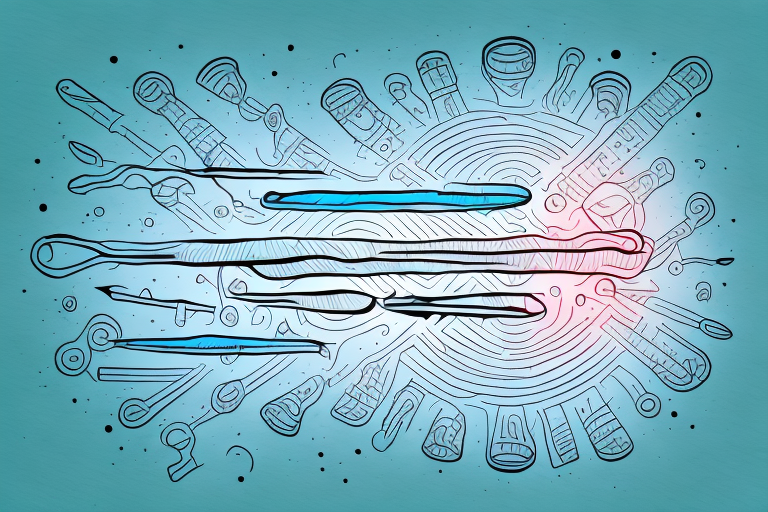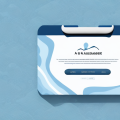Are you looking for a way to improve your athletic performance, speed up your muscle recovery after workouts, and alleviate muscle pain and tension? Look no further than the stick muscle roller trigger point body roller. This simple yet highly effective tool is a must-have for athletes, gym-goers, and anyone who wants to take their self-care game to the next level. In this article, we’ll explore the science behind trigger points and myofascial release, the benefits of using a stick muscle roller, and tips for incorporating it into your daily routine.
Understanding Trigger Points and Muscle Tension
Before we dive into the benefits of using a stick muscle roller, it’s important to understand the concept of trigger points and how they contribute to muscle tension and pain. Simply put, trigger points are areas of hyperirritability in muscles, often caused by overuse, poor posture, or stress. These points can refer pain to other parts of the body and limit range of motion.
Muscle tension is a common problem for everyone, from athletes to office workers. While stretching and massage can be helpful, they may not always be accessible or provide long-term relief. That’s where a stick muscle roller comes in.
A stick muscle roller is a tool designed to target trigger points and release muscle tension. By applying pressure to specific areas of the body, a stick muscle roller can help break up knots and adhesions in the muscles, improving circulation and promoting healing. It can also be used to warm up muscles before exercise or to aid in recovery after a workout.
How a Stick Muscle Roller Works: An Overview
A stick muscle roller, also known as a trigger point body roller, is a simple, handheld tool that allows you to massage and apply pressure to specific areas of the body. The device usually consists of a long, thin handle with one or more spinning or stationary rollers on the end. Some models may have different shapes and sizes of rollers to target different areas of the body.
When you roll the stick over your muscles, it stimulates blood flow, breaks up adhesions, and encourages the release of tightness in the fascia, or connective tissue surrounding the muscles. This process is known as myofascial release and can help alleviate muscle tension and pain, increase range of motion, and improve overall muscle health.
The Science Behind Myofascial Release
Myofascial release is a well-established technique used by physical therapists, massage therapists, and other healthcare professionals to treat a variety of conditions, including back pain, neck pain, headaches, and sports injuries. While the exact mechanisms behind myofascial release are not fully understood, it is believed to work by breaking up adhesions in the fascia and promoting the release of tension in the muscles.
Research has shown that myofascial release can lead to significant improvements in pain, range of motion, and muscle function. One study published in the Journal of Sports Rehabilitation found that using a foam roller, a similar tool to a stick muscle roller, after exercise improved muscle soreness and range of motion in healthy adults.
Techniques for Using a Stick Muscle Roller on Different Body Parts
When it comes to using a stick muscle roller, there is no one-size-fits-all approach. Different areas of the body require different techniques and pressure levels to achieve optimal results. Here are some general guidelines:
- Calves: Roll the stick from the ankle to the knee, applying moderate pressure.
- Quadriceps: Roll the stick from the hip to the knee, applying moderate pressure.
- Glutes: Sit on the roller and cross one leg over the other. Roll the glutes, applying moderate pressure.
- Back: Lie on the floor and place the roller under your shoulder blades. Roll up and down the spine, applying light to moderate pressure.
- Neck: Hold the stick with both hands and roll it up and down the sides and back of the neck, applying light to moderate pressure.
Pre-Workout and Post-Workout Benefits of Using a Stick Muscle Roller
Whether you’re gearing up for a tough workout or winding down after one, a stick muscle roller can be a valuable tool. Here’s how:
- Pre-workout: Using a stick muscle roller before a workout can help warm up your muscles and improve mobility. It can also help reduce the risk of injury by promoting blood flow and breaking up adhesions.
- Post-workout: Using a stick muscle roller after a workout can help speed up recovery time and relieve muscle soreness. It can also help prevent post-workout stiffness and keep your muscles flexible.
The Importance of Regular Use for Long-Term Results
Like any self-care practice, using a stick muscle roller requires regular use to see long-term results. While you may experience immediate relief from muscle tension and soreness after using the tool, it’s important to incorporate it into your daily or weekly routine to maintain those benefits.
You may also find that you need to adjust your technique and target different areas of the body over time. As always, listen to your body and pay attention to any areas of pain or discomfort.
Choosing the Right Type of Stick Muscle Roller for Your Needs
There are a variety of stick muscle roller options on the market, from simple wooden rollers to more advanced models with multiple rollers and adjustable tension levels. When choosing a stick muscle roller, consider your individual needs and preferences.
If you’re new to using a stick muscle roller, start with a simple model and work your way up to more advanced options. Make sure to choose a roller that is durable, easy to grip, and the right size for your body.
Combining a Stick Muscle Roller with Other Self-Care Practices for Optimal Wellness
While a stick muscle roller can be a powerful tool for alleviating muscle tension and pain, it’s just one piece of the puzzle when it comes to maintaining optimal wellness. Here are some other self-care practices you may want to consider incorporating into your routine:
- Stretching: Regular stretching can help improve flexibility, reduce muscle tension, and enhance athletic performance.
- Hydration: Staying hydrated is important for overall health and can help prevent muscle cramps and stiffness.
- Massage: Professional massage can provide deep relaxation and help alleviate chronic pain and tension.
- Meditation: Practicing meditation or mindfulness can help reduce stress and promote overall well-being.
How to Incorporate a Stick Muscle Roller into Your Fitness Routine
Ready to try using a stick muscle roller for yourself? Here are some tips for incorporating it into your fitness routine:
- Start slowly: Begin by using the roller for just a few minutes at a time and gradually work your way up to longer sessions.
- Focus on problem areas: Use the roller to target specific areas of the body that are tight or sore.
- Be consistent: Incorporate the roller into your daily or weekly routine for the best results.
- Listen to your body: If an area is particularly sensitive or painful, ease up on the pressure or avoid rolling that area altogether.
In conclusion, using a stick muscle roller trigger point body roller can be a game-changer for anyone looking to improve their muscle health and overall wellness. By understanding the science behind trigger points and myofascial release, using proper techniques, and incorporating the roller into your daily routine, you can experience lasting benefits for your body and mind. Give it a try and see how it can transform your self-care practice.





